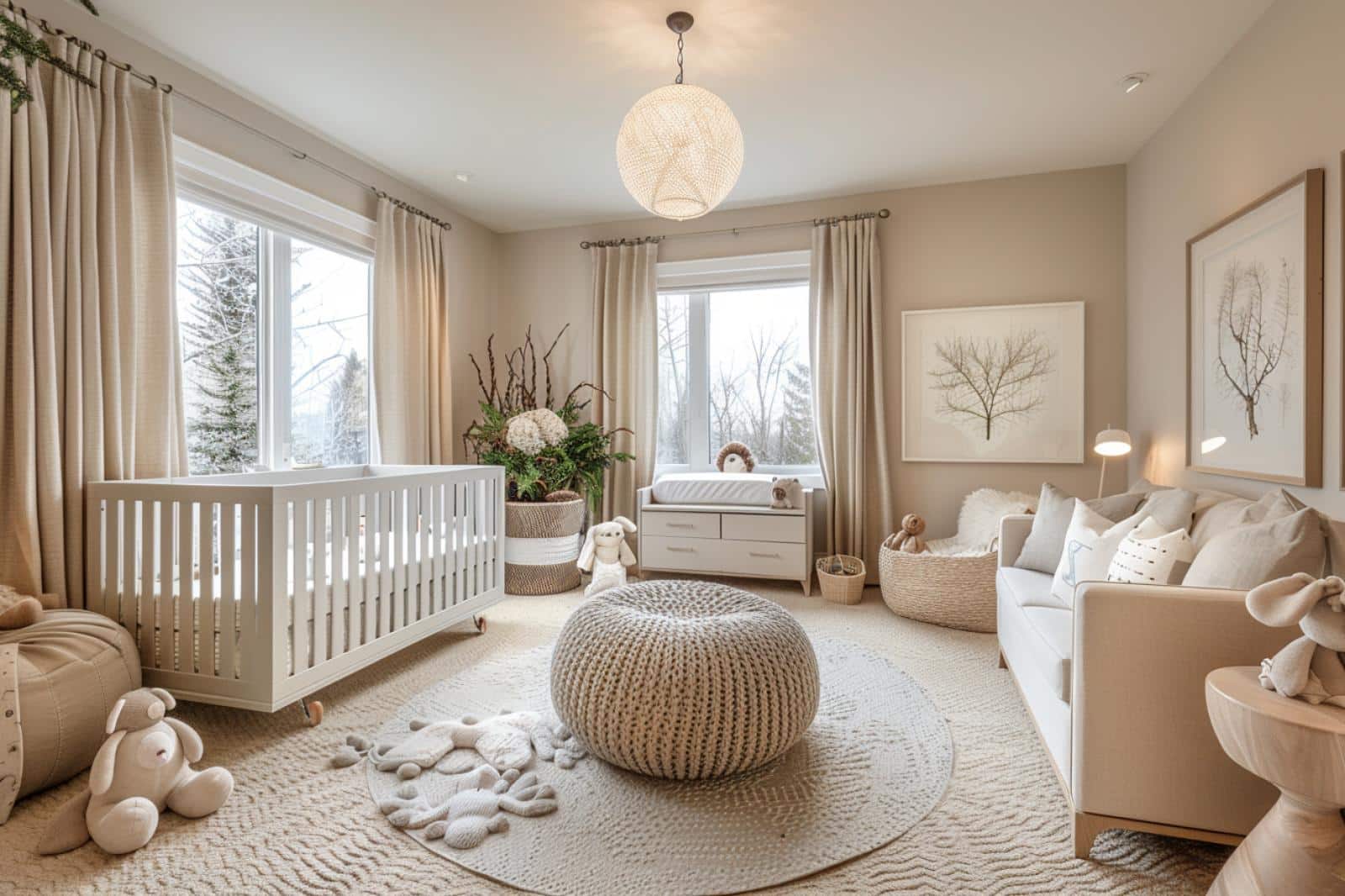How to Design a Nursery That’s Easy to Update as Your Child Grows?

Designing a nursery that can evolve with your child isn’t just a matter of saving money, it’s about fostering a space where your little one can grow and express their ever-changing personality. In this guide, we’ll share some best practices and ideas to keep your nursery up-to-date without needing a complete overhaul every few years.
Choosing the Right Furniture
When it comes to selecting nursery furniture, longevity is the name of the game. Your choice needs to be durable enough to withstand the rigors of childhood, but versatile enough to suit your child as they grow.
Cela peut vous intéresser : What’s the Ideal Way to Display Art in a Home with High Ceilings?
The Crib
One of your first considerations should be the crib. Rather than opting for a traditional design, consider a convertible crib. These clever pieces of furniture start as a crib, and can be transformed into a toddler bed, and eventually, a full size bed. This is an investment that will save you not only money, but also the time and effort of shopping for new beds as your child grows.
Storage Solutions
As your child grows, so does the amount of stuff they accumulate. From clothes and toys to books and school supplies, storage can quickly become an issue. Consider investing in furniture that doubles as storage. A bench with built-in cubbies, a bed with drawers underneath, or shelves that can be adjusted as your child’s needs change are all great options.
A découvrir également : What Are the Best Smart Home Devices for Beginners?
Picking the Perfect Decor
The decor of your nursery should reflect the light-hearted spirit of childhood, while still being adaptable for an evolving taste.
Wall Decor
When it comes to the walls of your nursery, think in layers. Start with a neutral base color. This will be the backdrop to your design and should be something that can easily transition from a nursery to a child’s room. Then, add removable wall stickers or decals. These can easily be changed as your child’s interests shift.
Wallpaper
Another option for your nursery walls is removable wallpaper. This allows you to add a bold pattern or design to the room without the long term commitment. As your child gets older, the wallpaper can be easily updated to reflect their personal style.
Creating a Flexible Layout
Designing a flexible layout will make updating the room simpler as your child grows.
The Bed
While your baby is small, the crib will be the main feature of the room. As they grow, you might want to shift the focus towards a play area or a desk for school work. Keep this in mind when you are initially setting up the space.
Room to Grow
Consider leaving some open space in the room. This gives you the flexibility to add a play area, a reading nook, or a desk as your child gets older. An open floor plan also makes the room feel larger and gives your child room to spread out and play.
Adding Personal Touches
Finally, remember that this is your child’s space. Look for ways to incorporate their interests and personality into the design. This will make the room feel like theirs and make updates easier as their tastes change.
Display Areas
One simple way to personalize the space is by creating display areas. This could be a gallery wall for their artwork, a shelf for their favorite books, or hooks for their backpack and hats.
Personalized Decor
Another idea is to incorporate personalized decor. This could be anything from a custom name sign to bedding featuring their favorite character or theme. Just remember to keep these items easily changeable, as their interests will likely evolve.
The key to designing a nursery that grows with your child is flexibility. By choosing versatile furniture, keeping decor neutral and easily changeable, and allowing room for growth, you’ll create a space that can easily evolve with your child. This not only saves you time and money, but also creates a room that your child will love for many years. So, get creative, have fun, and remember, this is just the start of a wonderful journey.
Incorporating Multi-functional Elements
A key aspect of designing a nursery that grows with your child is the incorporation of multi-functional elements. This approach encourages you to identify items that can serve multiple purposes over time, promoting a more efficient use of the available real estate within the nursery.
The Changing Table
One such multi-functional piece is the changing table. Instead of a conventional changing table, opt for a dresser or a table that can be used as a changing table for your baby’s early years. As they grow, the surface can be cleared to transform into a storage area for toys, books, or school supplies.
This strategy will help you maximize your investment and minimize the need for a complete room makeover as your child’s needs evolve. Moreover, this approach will save you the chore of finding a new home for an unneeded, bulky changing table when the diaper phase is over.
Seating Arrangements
A comfortable rocking chair or glider is a must-have for those late-night feedings or storytime sessions. However, as your child grows, this piece of furniture can also adapt. It can become a cozy reading spot, or a place where you can sit and chat with your growing child.
Opting for a timeless design for your seating arrangement will ensure it fits the room’s evolving aesthetic. Similarly, choosing a neutral color will ensure it can easily blend with the changing decor over the years.
Conclusion
Creating a nursery that grows with your child is a delicate balancing act between practicality and aesthetics. It’s about understanding that a nursery is not a static space but rather one that needs to be flexible to accommodate the ever-changing needs and tastes of your child.
The nursery design ideas shared in this guide are aimed to assist you in this exciting, yet challenging task. From investing in convertible furniture like cribs and changing tables to incorporating multi-functional elements like storage solutions, we discussed a range of strategies that will help you design a room that evolves as your child does.
Remember, the key to a successful nursery design is flexibility. Whatever choices you make, ensure they are versatile enough to grow with your child. A well-thought-out, adaptable nursery will save you both time and money in the long run.
Furthermore, it’s essential to involve your child in the rearrangement process as they grow. This will make them feel more connected to the room and create a sense of ownership. It will also make for some lovely bonding moments!
Ultimately, designing a nursery that easily adapts to your child’s growth is about creating a room that can become a canvas for your child’s evolving creativity and imagination. It’s about crafting a space that they can call their own for many years to come.
